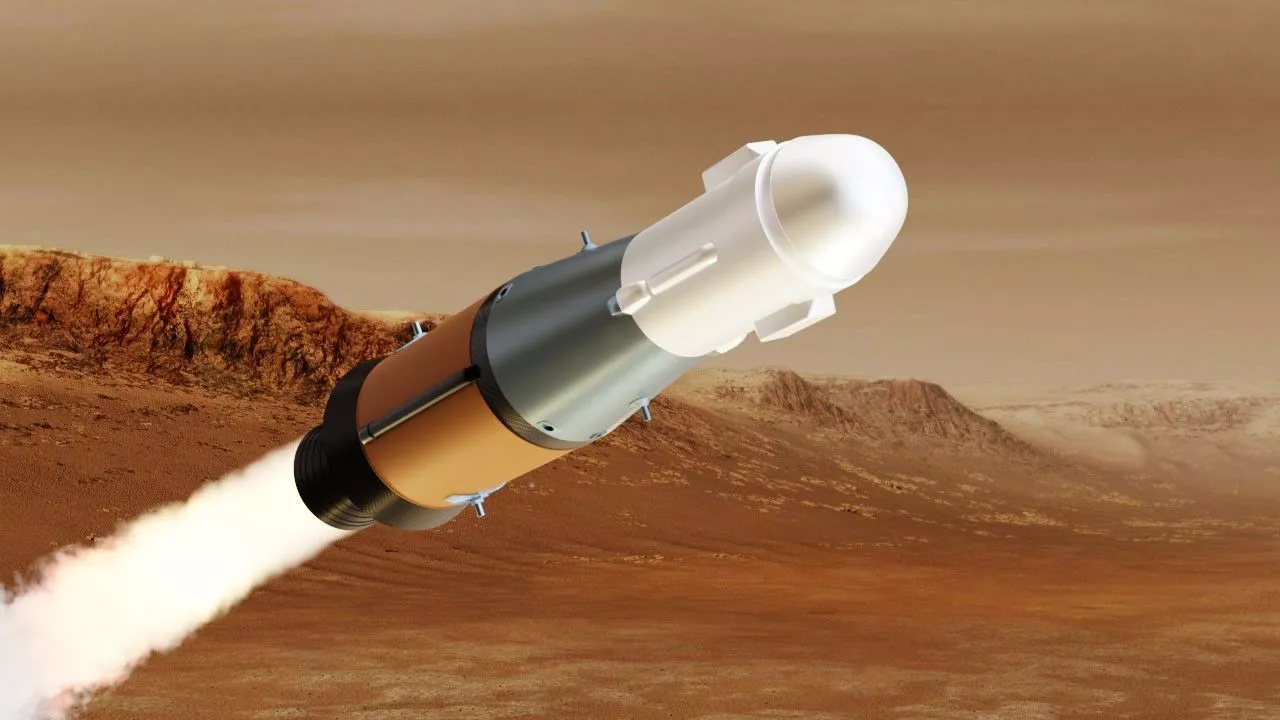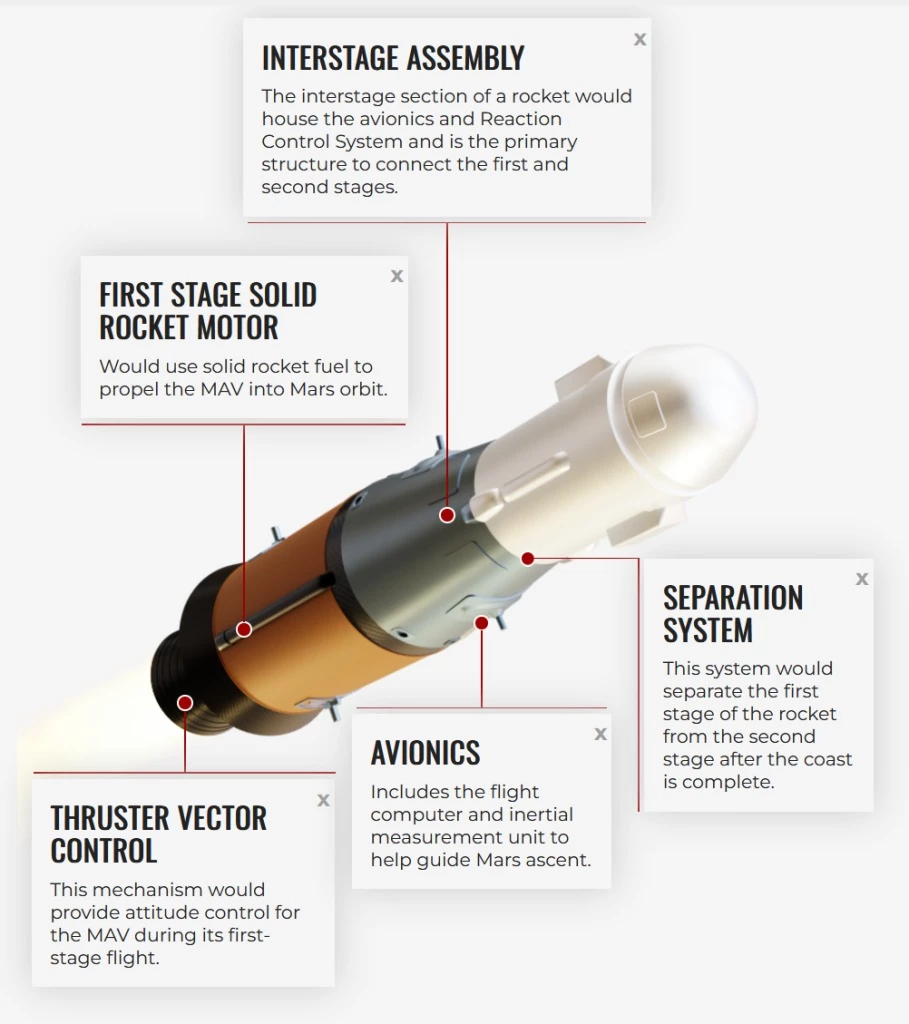Northrop Grumman has successfully ground tested the motor that could be used for the historic first orbital rocket launch from another planet. The solid rocket booster is intended to help return the first geological samples from the planet Mars.
One of the most ambitious space missions ever conceived is the Mars Sample Return (MSR) mission. This international effort involves a series of spacecraft whose primary function is to return the first samples from the Red Planet to Earth for detailed laboratory analysis.
It sounds simple, but the logistics are insanely complicated. The first phase is already underway as NASA's Perseverance rover traverses Mars collecting soil and rock samples using its robotic arm and drill system. Some of these samples are being placed in special vials and dropped on the surface where they will lie for years until a landing craft brings a second, more specialized rover to collect them and store them in a special container.
This is where the new rocket motor comes in. The last task of the rover will be to return to the lander, where a robotic arm will remove the sample container and transfer it to NASA's Mars Ascent Vehicle (MAV) – the first launch rocket ever to be sent to another planet.
Standing about 10 ft (3 m) tall and weighing about 992 lb (450 kg), the MAV consists of two solid rocket stages plus avionics, sensors, and steering gear. Once launched, it is designed to reach a velocity of 2.5 miles per second (4 km/s), which is enough to place its payload into a low orbit around Mars in about 10 minutes. There it will rendezvous with another spacecraft, which will take the sample container and return it to Earth.
The recent tests at Northrop Grumman’s Elkton, Maryland campus were aimed at testing the MAV's second stage – in particular, how well it performs with a new propellant mixture. Based on a similar propellant used in the company's STAR rocket motors, the exact nature and specifications of the propellant haven't been released, though it's likely an ammonium perchlorate composite propellant (APCP) with a powdered aluminum fuel mixed into a rubber-like polymer. Such a propellant is already proven and is well-suited for the extreme conditions of space and meets current planetary protection requirements.

One interesting point of the static test was that the rocket spun at high speed during the burn. This suggests that the MAV will be spin-stabilized to keep it on course during the Martian launch.
"With this third successful full-scale static test, we have demonstrated a near-flight-ready design using proven space materials and propellants," said Jeff Bemis, program manager of the Mars Ascent Propulsion System (MAPS) program at Northrop Grumman. "We’ve been to Mars before using materials and propellants such as these. Our materials and propellants have a legacy of proven reliability and are well-suited for the extreme conditions of space and planetary protection requirements."
Source: Northrop Grumman






